【JS】React Fiber为什么使用链表来设计组件树
React Fiber为什么使用链表来设计组件树
张越发布于 今天 09:45
背景介绍
Fiber架构主要有两个阶段, reconciliation(协调)和commit(提交)。协调阶段通常称为渲染阶段。此时会发生:
- 更新state和props
- 调用生命周期
- 检索子级
- 比较和之前子级的区别
- 更新DOM
这些被称为Fiber的内部活动。
如果React同步遍历整个组件树,一次的更新操作过多,执行的时间可能会超过16ms以上, 会导致视觉上的卡顿。
requestIdleCallback
requestIdleCallback会在浏览器空闲的时候,执行callback。有关requestIdleCallback的内容可以查看我之前写的文章详解 requestIdleCallback
但是由于requestIdleCallback的执行频率不足以流畅的呈现UI, React团队不得不实现自己的版本
我们假定React执行更新的操作都在performWork中,并且使用requestIdleCallback,代码可能会如下所示
requestIdleCallback((deadline) => {while ((deadline.timeRemaining() > 0 || deadline.didTimeout) && nextComponent) {
nextComponent = performWork(nextComponent);
}
});
我们在一个组件上执行工作,然后返回下一个要处理的组件。我们不能像之前一样同步处理整个组件树。要解决此问题React必须从依赖堆栈的同步递归模型迁移到具有链表和指针的异步模型。
StackFrame 栈帧
每一次函数的调用,都会在调用栈(call stack)上维护一个独立的栈帧(stack frame).每个独立的栈帧一般包括:
什么是栈
在数据结构中, 栈是限定仅在表尾进行插入或删除操作的线性表。栈是一种数据结构,它按照后进先出的原则存储数据,先进入的数据被压入栈底,最后的数据在栈顶,需要读数据的时候从栈顶开始弹出数据。
什么是栈帧
每一次函数的调用,都会在调用栈(call stack)上维护一个独立的栈帧(stack frame).每个独立的栈帧包含:
- 函数的返回地址和参数
- 临时变量: 包括函数的非静态局部变量以及编译器自动生成的其他临时变量
- 函数调用的上下文
- 栈是从高地址向低地址延伸,一个函数的栈帧用ebp和esp这两个寄存器来划定范围。ebp指向当前的栈帧的底部, esp始终指向栈帧的顶部;ebp寄存器又被称为帧指针(Frame Pointer);esp寄存器又被称为栈指针(Stack Pointer);
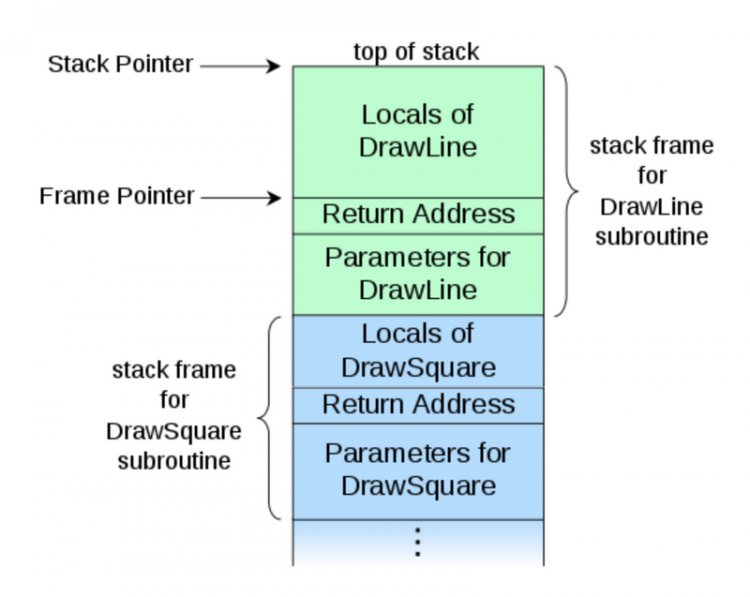
堆栈与React
React的协调阶段,之前使用了依赖于内置递归模型, 关于协调官方文档描述了此过程
假设我们有如下的组件树:
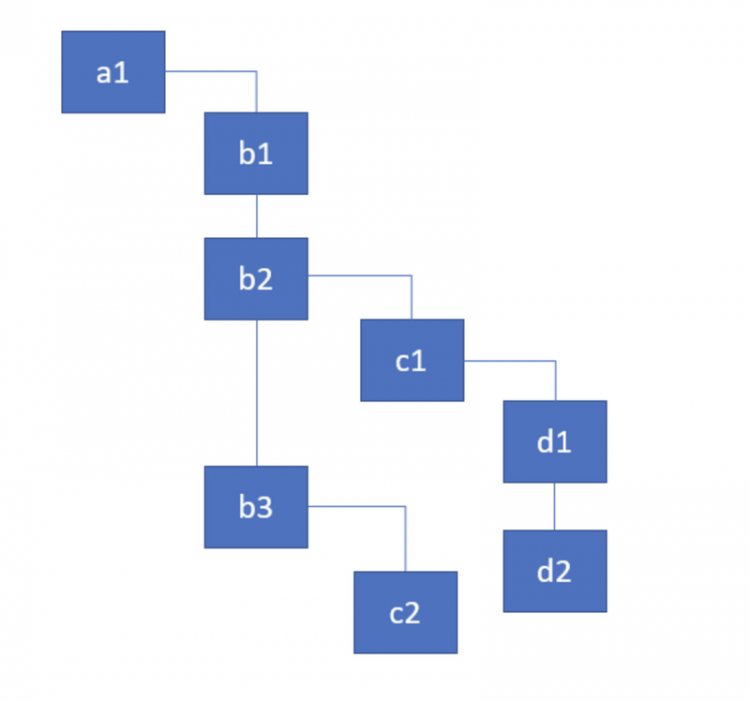
我们最简洁的虚拟DOM,表示这个组件树
const a1 = {name: 'a1'};const b1 = {name: 'b1'};
const b2 = {name: 'b2'};
const b3 = {name: 'b3'};
const c1 = {name: 'c1'};
const c2 = {name: 'c2'};
const d1 = {name: 'd1'};
const d2 = {name: 'd2'};
a1.render = () => [b1, b2, b3];
b1.render = () => [];
b2.render = () => [c1];
b3.render = () => [c2];
c1.render = () => [d1, d2];
c2.render = () => [];
d1.render = () => [];
d2.render = () => [];
递归遍历组件树
function walk(instance) {doWork(instance);
const children = instance.render();
children.forEach(walk);
}
function doWork(o) {
console.log(o.name);
}
// a1, b1, b2, c1, d1, d2, b3, c2
walk(a1)
递归遍历组件树的方法很直接,但是它有局限性,它无法在特定的组件上暂停工作。如果通过这种方法,React会一直保持迭代,直到处理完所有组件并且堆栈为空为止。
链表树遍历
关于链表树遍历算法的要点请看这里
如果需要实现链表树的遍历,链表树的每个节点需要包含下面三个属性:
- child, 第一个子级的引用
- sibling, 第一个同级的引用
- return, 父级的引用
在React新的协调算法中,拥有这些字段的的节点被成为Fiber。下图是一个单链表树。
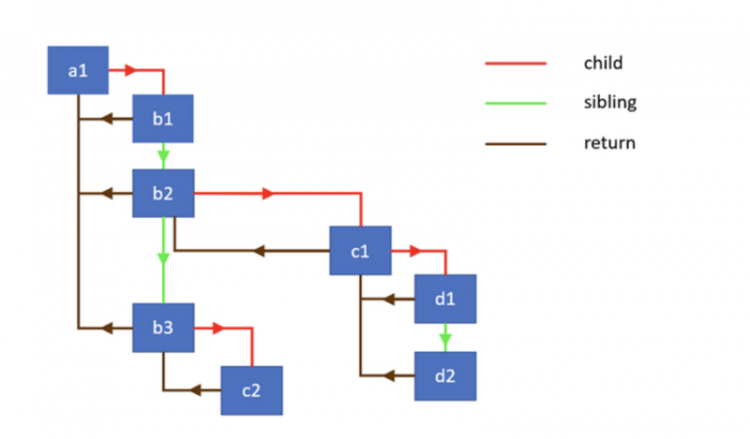
首先定义下节点的构造函数
class Node {constructor(instance) {
this.instance = instance;
this.child = null;
this.sibling = null;
this.return = null;
}
}
我们需要一个函数,链接父节点和子节点。link函数函数parent的第一个子节点。如果没有子节点返回null
.
function link(parent, elements) {// 如果没有子节点返回空数组
if (elements === null) elements = [];
parent.child = elements.reduceRight((previous, current) => {
// 创建子节点
const node = new Node(current);
// 设置父节点的引用
node.return = parent;
// 设置同级的引用,第一次迭代previous是null
node.sibling = previous;
return node;
}, null);
return parent.child;
}
创建单链表树
const children = [{name: 'b1'}, {name: 'b2'}];const parent = new Node({name: 'a1'});
const child = link(parent, children);
创建完成,单链表的结构应该如下图所示:
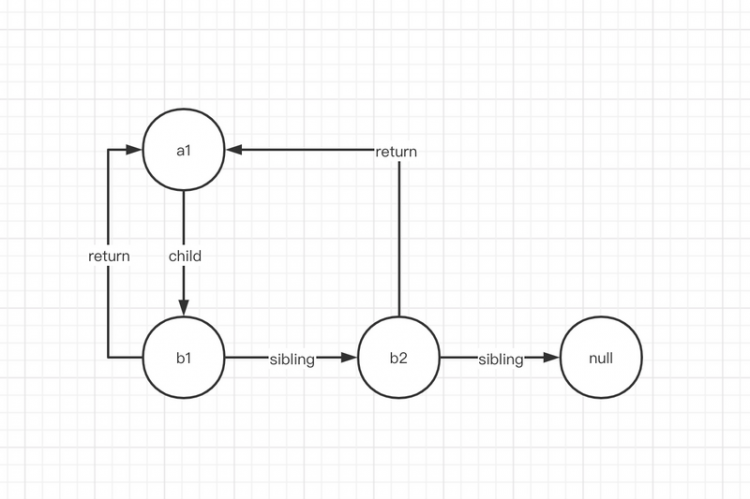
// trueconsole.log(parent.child.instance.name === 'b1');
// true
console.log(child.sibling.instance.name === 'b2');
// true
console.log(child.sibling.sibling === null);
遍历链表树
首先创建一个工具函数,可以打印遍历的过程,还可以链接父节点和子节点
function doWork(node) {console.log(node.instance.name);
const children = node.instance.render();
return link(node, children);
}
接下来我们开始实现单链表树遍历算法,算法是深度优先的实现。我们首先创建一些节点
const a1 = {name: 'a1'};const b1 = {name: 'b1'};
const b2 = {name: 'b2'};
const b3 = {name: 'b3'};
const c1 = {name: 'c1'};
const c2 = {name: 'c2'};
const d1 = {name: 'd1'};
const d2 = {name: 'd2'};
a1.render = () => [b1, b2, b3];
b1.render = () => [];
b2.render = () => [c1];
b3.render = () => [c2];
c1.render = () => [d1, d2];
c2.render = () => [];
d1.render = () => [];
d2.render = () => [];
function walk(o) {// 根节点
let root = o;
// 指针,当前遍历到的节点
let current = o;
while (true) {
// 使用doWork,连接根节点和子节点,并返回根节点的第一个子节点
let child = doWork(current);
// 1. 如果有子节点,将当前的指针指向子节点,并进入下一个循环(因为是优先深度)
// 2. 如果没有子节点,略过
if (child) {
current = child;
continue;
}
// 如果当前指针等于根节点,结束遍历
if (current === root) {
return;
}
// 如果没有兄弟,进入while循环
while (!current.sibling) {
// 如果当前指针等于根节点,结束遍历
if (!current.return || current.return === root) {
return;
}
// 如果没有子节点,并且没有兄弟节点,返回父级的节点
current = current.return;
}
// 如果有兄弟节点,将当前指针设置为兄弟节点,进入下一次迭代
current = current.sibling;
}
}
walk(new Node(a1))
总结下walk的思路
- 从根节点root获取第一个子节点
- 如果root有子节点,将当前指针设置为第一个子节点,并进入下一次迭代。(深度优先遍历)
- 如果root的第一个子节点,没有子节点,则尝试获取它的第一个兄弟节点。
- 如果有兄弟节点,将当前指针设置为第一个子节点,然后兄弟节点进入深度优先遍历。
- 如果没有兄弟节点,则返回父节点。最后结束遍历
节点遍历的过程如下图:

我们现在保留对当前堆栈帧的引用,就可以随时停止遍历然后再恢复遍历
function walk(o) {let root = o;
let current = o;
while (true) {
...
current = child;
...
current = current.return;
...
current = current.sibling;
}
}
🚀 🚀 🚀 原文在这里没有举例子说明,我想在这里实现一个例子,来说明fiber如何中断遍历,然后恢复遍历的, 使用了浏览器的requestIdleCallback API
// 使用sleep模拟渲染的耗费时间function sleep (ms = 100) {
let sleepSwitch = true
let s = Date.now()
while (sleepSwitch) {
if (Date.now() - s > ms) {
sleepSwitch = false
}
}
}
class Node {
constructor(instance) {
this.instance = instance;
this.child = null;
this.sibling = null;
this.return = null;
}
}
function link(parent, elements) {
if (elements === null) elements = [];
parent.child = elements.reduceRight((previous, current) => {
const node = new Node(current);
node.return = parent;
node.sibling = previous;
return node;
}, null);
return parent.child;
}
// 节点
const a1 = {name: 'a1'};
const b1 = {name: 'b1'};
const b2 = {name: 'b2'};
const b3 = {name: 'b3'};
const c1 = {name: 'c1'};
const c2 = {name: 'c2'};
const d1 = {name: 'd1'};
const d2 = {name: 'd2'};
a1.render = () => {
sleep(60)
return [b1, b2, b3]
};
b1.render = () => {
return []
};
b2.render = () => {
sleep(20)
return [c1]
};
b3.render = () => {
sleep(20)
return [c2]
};
c1.render = () => {
sleep(40)
return [d1, d2]
};
c2.render = () => [];
d1.render = () => [];
d2.render = () => [];
const root = new Node(a1);
// 一直保持对当前节点的引用
let current = root;
// 是否渲染完成
let isRendered = false;
const rIcb = (deadline) => {
if (deadline.timeRemaining() > 20) {
walk(current, deadline)
} else {
requestIdleCallback(rIcb);
}
}
function doWork(node, deadline) {
if (deadline.timeRemaining() > 20) {
console.log(node.instance.name);
const children = node.instance.render();
return link(node, children);
} else {
requestIdleCallback(rIcb);
}
}
function walk(o, deadline) {
while (true) {
let child = doWork(current, deadline);
if (child) {
current = child;
continue;
}
if (current === root) {
return;
}
while (!current.sibling) {
if (!current.return || current.return === root) {
return;
}
current = current.return;
}
current = current.sibling;
}
}
requestIdleCallback(rIcb);
运行结果:
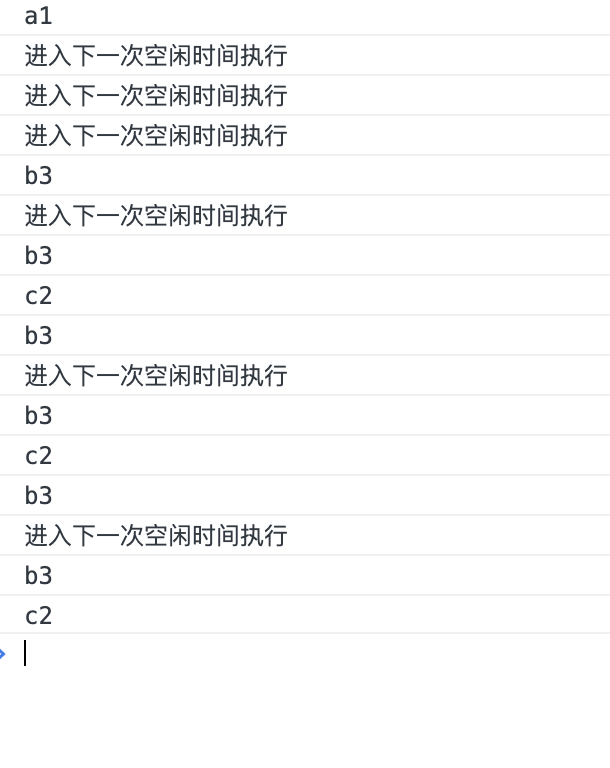
从上面的例子可以看出,我们只需要拿到当前堆帧的引用,就可以暂停遍历,随后恢复遍历
React和工作循环
这是React中工作循环的代码,nextUnitOfWork变量作为顶部栈帧,保留对当前Fiber节点的引用。
function workLoop(isYieldy) {if (!isYieldy) {
while (nextUnitOfWork !== null) {
nextUnitOfWork = performUnitOfWork(nextUnitOfWork);
}
} else {
while (nextUnitOfWork !== null && !shouldYield()) {
nextUnitOfWork = performUnitOfWork(nextUnitOfWork);
}
}
}
React中的算法,既可以同步遍历组件树,也可以异步遍历组件树,检查在执行Fiber内部活动后后是否还剩下时间。是否需要等到一次空闲时间执行任务。函数shouldYield返回基于deadlineDidExpire和deadline变量的结果,这些变量在React为Fiber节点执行工作时不停的更新。
参考
- The how and why on React’s usage of linked list in Fiber to walk the component’s tree
- 栈帧(Stack Frame)
javascript前端react.js
阅读 44发布于 今天 09:45
本作品系原创,采用《署名-非商业性使用-禁止演绎 4.0 国际》许可协议
张越
想去字节跳动,qq:1025873823
394 声望
178 粉丝
张越
想去字节跳动,qq:1025873823
394 声望
178 粉丝
宣传栏
目录
背景介绍
Fiber架构主要有两个阶段, reconciliation(协调)和commit(提交)。协调阶段通常称为渲染阶段。此时会发生:
- 更新state和props
- 调用生命周期
- 检索子级
- 比较和之前子级的区别
- 更新DOM
这些被称为Fiber的内部活动。
如果React同步遍历整个组件树,一次的更新操作过多,执行的时间可能会超过16ms以上, 会导致视觉上的卡顿。
requestIdleCallback
requestIdleCallback会在浏览器空闲的时候,执行callback。有关requestIdleCallback的内容可以查看我之前写的文章详解 requestIdleCallback
但是由于requestIdleCallback的执行频率不足以流畅的呈现UI, React团队不得不实现自己的版本
我们假定React执行更新的操作都在performWork中,并且使用requestIdleCallback,代码可能会如下所示
requestIdleCallback((deadline) => {while ((deadline.timeRemaining() > 0 || deadline.didTimeout) && nextComponent) {
nextComponent = performWork(nextComponent);
}
});
我们在一个组件上执行工作,然后返回下一个要处理的组件。我们不能像之前一样同步处理整个组件树。要解决此问题React必须从依赖堆栈的同步递归模型迁移到具有链表和指针的异步模型。
StackFrame 栈帧
每一次函数的调用,都会在调用栈(call stack)上维护一个独立的栈帧(stack frame).每个独立的栈帧一般包括:
什么是栈
在数据结构中, 栈是限定仅在表尾进行插入或删除操作的线性表。栈是一种数据结构,它按照后进先出的原则存储数据,先进入的数据被压入栈底,最后的数据在栈顶,需要读数据的时候从栈顶开始弹出数据。
什么是栈帧
每一次函数的调用,都会在调用栈(call stack)上维护一个独立的栈帧(stack frame).每个独立的栈帧包含:
- 函数的返回地址和参数
- 临时变量: 包括函数的非静态局部变量以及编译器自动生成的其他临时变量
- 函数调用的上下文
- 栈是从高地址向低地址延伸,一个函数的栈帧用ebp和esp这两个寄存器来划定范围。ebp指向当前的栈帧的底部, esp始终指向栈帧的顶部;ebp寄存器又被称为帧指针(Frame Pointer);esp寄存器又被称为栈指针(Stack Pointer);

堆栈与React
React的协调阶段,之前使用了依赖于内置递归模型, 关于协调官方文档描述了此过程
假设我们有如下的组件树:

我们最简洁的虚拟DOM,表示这个组件树
const a1 = {name: 'a1'};const b1 = {name: 'b1'};
const b2 = {name: 'b2'};
const b3 = {name: 'b3'};
const c1 = {name: 'c1'};
const c2 = {name: 'c2'};
const d1 = {name: 'd1'};
const d2 = {name: 'd2'};
a1.render = () => [b1, b2, b3];
b1.render = () => [];
b2.render = () => [c1];
b3.render = () => [c2];
c1.render = () => [d1, d2];
c2.render = () => [];
d1.render = () => [];
d2.render = () => [];
递归遍历组件树
function walk(instance) {doWork(instance);
const children = instance.render();
children.forEach(walk);
}
function doWork(o) {
console.log(o.name);
}
// a1, b1, b2, c1, d1, d2, b3, c2
walk(a1)
递归遍历组件树的方法很直接,但是它有局限性,它无法在特定的组件上暂停工作。如果通过这种方法,React会一直保持迭代,直到处理完所有组件并且堆栈为空为止。
链表树遍历
关于链表树遍历算法的要点请看这里
如果需要实现链表树的遍历,链表树的每个节点需要包含下面三个属性:
- child, 第一个子级的引用
- sibling, 第一个同级的引用
- return, 父级的引用
在React新的协调算法中,拥有这些字段的的节点被成为Fiber。下图是一个单链表树。

首先定义下节点的构造函数
class Node {constructor(instance) {
this.instance = instance;
this.child = null;
this.sibling = null;
this.return = null;
}
}
我们需要一个函数,链接父节点和子节点。link函数函数parent的第一个子节点。如果没有子节点返回null
.
function link(parent, elements) {// 如果没有子节点返回空数组
if (elements === null) elements = [];
parent.child = elements.reduceRight((previous, current) => {
// 创建子节点
const node = new Node(current);
// 设置父节点的引用
node.return = parent;
// 设置同级的引用,第一次迭代previous是null
node.sibling = previous;
return node;
}, null);
return parent.child;
}
创建单链表树
const children = [{name: 'b1'}, {name: 'b2'}];const parent = new Node({name: 'a1'});
const child = link(parent, children);
创建完成,单链表的结构应该如下图所示:

// trueconsole.log(parent.child.instance.name === 'b1');
// true
console.log(child.sibling.instance.name === 'b2');
// true
console.log(child.sibling.sibling === null);
遍历链表树
首先创建一个工具函数,可以打印遍历的过程,还可以链接父节点和子节点
function doWork(node) {console.log(node.instance.name);
const children = node.instance.render();
return link(node, children);
}
接下来我们开始实现单链表树遍历算法,算法是深度优先的实现。我们首先创建一些节点
const a1 = {name: 'a1'};const b1 = {name: 'b1'};
const b2 = {name: 'b2'};
const b3 = {name: 'b3'};
const c1 = {name: 'c1'};
const c2 = {name: 'c2'};
const d1 = {name: 'd1'};
const d2 = {name: 'd2'};
a1.render = () => [b1, b2, b3];
b1.render = () => [];
b2.render = () => [c1];
b3.render = () => [c2];
c1.render = () => [d1, d2];
c2.render = () => [];
d1.render = () => [];
d2.render = () => [];
function walk(o) {// 根节点
let root = o;
// 指针,当前遍历到的节点
let current = o;
while (true) {
// 使用doWork,连接根节点和子节点,并返回根节点的第一个子节点
let child = doWork(current);
// 1. 如果有子节点,将当前的指针指向子节点,并进入下一个循环(因为是优先深度)
// 2. 如果没有子节点,略过
if (child) {
current = child;
continue;
}
// 如果当前指针等于根节点,结束遍历
if (current === root) {
return;
}
// 如果没有兄弟,进入while循环
while (!current.sibling) {
// 如果当前指针等于根节点,结束遍历
if (!current.return || current.return === root) {
return;
}
// 如果没有子节点,并且没有兄弟节点,返回父级的节点
current = current.return;
}
// 如果有兄弟节点,将当前指针设置为兄弟节点,进入下一次迭代
current = current.sibling;
}
}
walk(new Node(a1))
总结下walk的思路
- 从根节点root获取第一个子节点
- 如果root有子节点,将当前指针设置为第一个子节点,并进入下一次迭代。(深度优先遍历)
- 如果root的第一个子节点,没有子节点,则尝试获取它的第一个兄弟节点。
- 如果有兄弟节点,将当前指针设置为第一个子节点,然后兄弟节点进入深度优先遍历。
- 如果没有兄弟节点,则返回父节点。最后结束遍历
节点遍历的过程如下图:

我们现在保留对当前堆栈帧的引用,就可以随时停止遍历然后再恢复遍历
function walk(o) {let root = o;
let current = o;
while (true) {
...
current = child;
...
current = current.return;
...
current = current.sibling;
}
}
🚀 🚀 🚀 原文在这里没有举例子说明,我想在这里实现一个例子,来说明fiber如何中断遍历,然后恢复遍历的, 使用了浏览器的requestIdleCallback API
// 使用sleep模拟渲染的耗费时间function sleep (ms = 100) {
let sleepSwitch = true
let s = Date.now()
while (sleepSwitch) {
if (Date.now() - s > ms) {
sleepSwitch = false
}
}
}
class Node {
constructor(instance) {
this.instance = instance;
this.child = null;
this.sibling = null;
this.return = null;
}
}
function link(parent, elements) {
if (elements === null) elements = [];
parent.child = elements.reduceRight((previous, current) => {
const node = new Node(current);
node.return = parent;
node.sibling = previous;
return node;
}, null);
return parent.child;
}
// 节点
const a1 = {name: 'a1'};
const b1 = {name: 'b1'};
const b2 = {name: 'b2'};
const b3 = {name: 'b3'};
const c1 = {name: 'c1'};
const c2 = {name: 'c2'};
const d1 = {name: 'd1'};
const d2 = {name: 'd2'};
a1.render = () => {
sleep(60)
return [b1, b2, b3]
};
b1.render = () => {
return []
};
b2.render = () => {
sleep(20)
return [c1]
};
b3.render = () => {
sleep(20)
return [c2]
};
c1.render = () => {
sleep(40)
return [d1, d2]
};
c2.render = () => [];
d1.render = () => [];
d2.render = () => [];
const root = new Node(a1);
// 一直保持对当前节点的引用
let current = root;
// 是否渲染完成
let isRendered = false;
const rIcb = (deadline) => {
if (deadline.timeRemaining() > 20) {
walk(current, deadline)
} else {
requestIdleCallback(rIcb);
}
}
function doWork(node, deadline) {
if (deadline.timeRemaining() > 20) {
console.log(node.instance.name);
const children = node.instance.render();
return link(node, children);
} else {
requestIdleCallback(rIcb);
}
}
function walk(o, deadline) {
while (true) {
let child = doWork(current, deadline);
if (child) {
current = child;
continue;
}
if (current === root) {
return;
}
while (!current.sibling) {
if (!current.return || current.return === root) {
return;
}
current = current.return;
}
current = current.sibling;
}
}
requestIdleCallback(rIcb);
运行结果:

从上面的例子可以看出,我们只需要拿到当前堆帧的引用,就可以暂停遍历,随后恢复遍历
React和工作循环
这是React中工作循环的代码,nextUnitOfWork变量作为顶部栈帧,保留对当前Fiber节点的引用。
function workLoop(isYieldy) {if (!isYieldy) {
while (nextUnitOfWork !== null) {
nextUnitOfWork = performUnitOfWork(nextUnitOfWork);
}
} else {
while (nextUnitOfWork !== null && !shouldYield()) {
nextUnitOfWork = performUnitOfWork(nextUnitOfWork);
}
}
}
React中的算法,既可以同步遍历组件树,也可以异步遍历组件树,检查在执行Fiber内部活动后后是否还剩下时间。是否需要等到一次空闲时间执行任务。函数shouldYield返回基于deadlineDidExpire和deadline变量的结果,这些变量在React为Fiber节点执行工作时不停的更新。
参考
- The how and why on React’s usage of linked list in Fiber to walk the component’s tree
- 栈帧(Stack Frame)
以上是 【JS】React Fiber为什么使用链表来设计组件树 的全部内容, 来源链接: utcz.com/a/113483.html

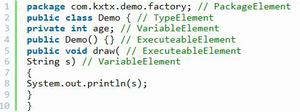

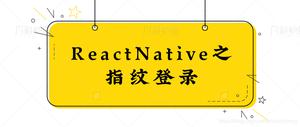


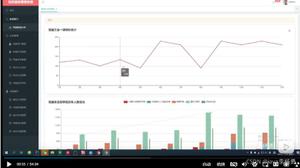

得票时间